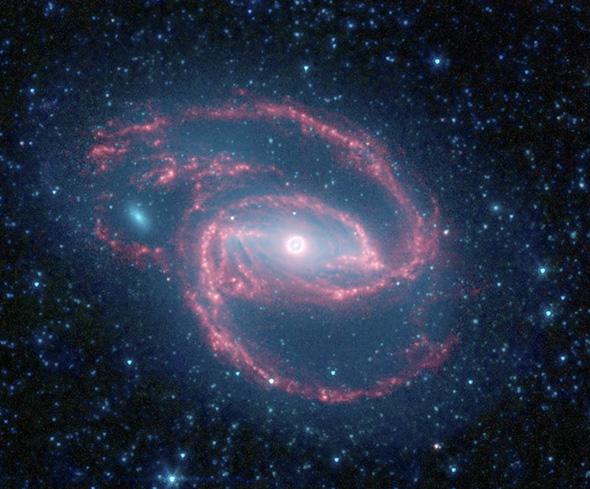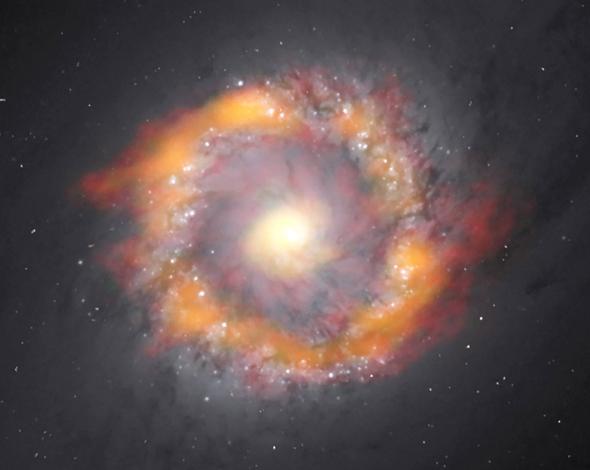How do you weigh a black hole?
That is, to be more precise (or pedantic), how do you figure out what the mass of a black hole is?
There are actually lots of ways, but they all depend on a very simple law of gravity: If you’re orbiting something (whether it’s a black hole, a star, a planet, or anything else), the closer you are, the faster you’ll go.
If you start there, and make a few assumptions, then all you need to do is observe stuff orbiting the black hole, figure out how quickly it’s moving, and boom. The black hole mass falls out.
Astronomers have been doing this for a long time. Observing stars in motion—literally, watching them physically move over several years—in the center of our own Milky Way galaxy shows that the supermassive black hole residing there has a mass of more than 4 million times that of our Sun.
Another way is to look at the motion of stars and gas in another galaxy. We can’t see their stars moving directly, but as they zip around the central black hole, sometimes they move toward us and sometimes away. That creates a Doppler shift, a shifting of the light emitted toward the blue and red end of the spectrum. The amount of Doppler shift depends on the velocity of the population of stars and/or gas as they orbit, and that means you can get the black hole mass that way. For example, gas in the center of the galaxy M84 was used to find its black hole has a mass of over a billion times that of the Sun!
Now astronomers have used a different way, though based on this same idea. They used ALMA, the Atacama Large Millimeter/submillimeter Array, to look at light emitted by the molecules HCN (hydrogen cyanide) and HCO (there’s no specific formal name I could find for this, but it’s a carbon atom bonded to an oxygen and hydrogen atom) in the galaxy NGC 1097. ALMA is very precise, and they were able to find both the location of the gas and its velocity.

Photo by NASA/JPL-Caltech/The SINGS Team (SSC/Caltech)
This gas orbits well outside the black hole, and there are stars there too, millions of them. To account for them (because if they don’t, they’ll get too high a mass for the black hole) they used Hubble observations of NGC 1097. They then fit a series of models, each using different black hole masses, to see which one fit the observed velocity of gas best.
Their result: NGC 1097 has a 140 million solar mass central black hole. That’s way beefier than ours. Also a bit higher than previous estimates of 100–120 million.
The reason this is important is that a lot of galaxy characteristics seem to be affiliated with how massive the central black hole is. We can only measure the motion of stars and gas near the center of nearby galaxies, but some of these other characteristics can be seen in galaxies much farther away. If we can get good measurements in different ways for nearby galaxies, we can use that to bootstrap our measurements for the more distant ones.
Also, NGC 1097 is a barred spiral galaxy, and for various reasons these can be very difficult beasts to observe and get the mass of their black holes. These new results should help resolve some of those issues.
So there you go. If you want to take the measure of a black hole, you have to see how things behave nearby it. That’s probably good advice for many things in life, but nothing more so than the heftiest single objects in the Universe.
